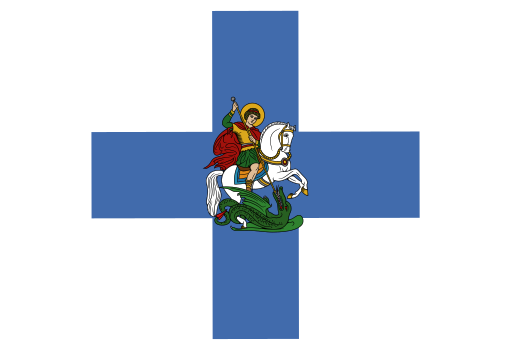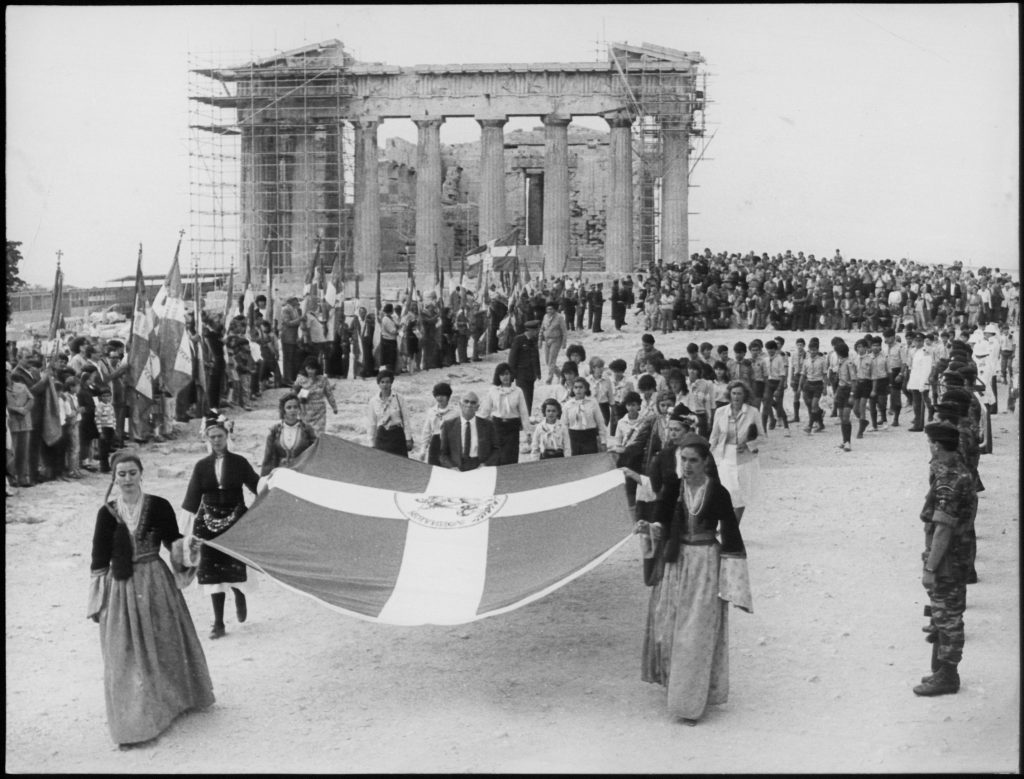103 years ago today, one of the earliest versions of the Greek Flag was adopted, with a blue cross layered over a white background.
Each country’s flag is symbolic for its fight for sovereignty, and the Greek flag is no different. Its blue and white striped glory flaunted many different looks before finally evolving into its final form in 1978.

Flag used by the Greek sipahis of the Ottoman army between 1431 and 1619. By Philly boy92 – Own work, Public Domain, Wikimedia Commons
Preceding the Greek revolution, there were regional flags circulating which often utilized religious and mythical symbols including St. George the Dragon, the double-headed eagle, and/or Christian emblems.
During the Orlov Revolt of 1769-1771, an unsuccessful Greek-Russian attempt to overthrow the Ottomans, Greek revolutionaries popularized a newer, widely utilized flag—a blue cross with a white background. However, a single national flag wouldn’t be adopted for another 50 years.
Merchant ships during Ottoman rule used a flag with two colors: red to represent the Ottomans and blue to represent the Christian Orthodoxy.
When the Greek Revolution began in 1821, other Western nations such as the French Kingdom, United Kingdom, and the Russian Empire gathered to aid Greece in its pursuit for independence.
Greek Orthodox Christian Merchant Flag (1453–1793). By DarkEvil – DarkEvil., Public Domain, Wikimedia Commons
From December 1821 to January 1822, the National Assembly convened. Together, they strategized and discussed plans for the formerly fractured state to embody a united front against the Ottomans. Subsequently, a new flag was standardized, symbolic of their unification and ironically reflecting a complete reversal of the flag which had circulated 50 years earlier, with blue taking the background and the cross being colored white.
On March 15, 1822, then President of the Executive Alexandros Mavrokordatos sanctioned the use of three distinct patterns for special use: The Land Flag would be the national flag, the blue cross with a white field in the upper left corner would be used by merchant ships, and the second sea flag, flaunting nine alternative blue and white stripes with a white cross on a blue background in the upper left corner, would be used on warships.

The third flag, utilized originally as a naval ensign, would be internationally recognized as the Greek flag for the first time on February 7, 1828. The nine blue and white alternating stripes are considered to represent the nine muses or the nine syllables in a Greek war-cry against Ottoman rule: Ελευθερία ή Θάνατος (Freedom or Death).
Even today, the shade of blue varies according to different flagmakers and their methods. Although the legislation cites the agreed upon shade of blue as “cyan,” the flag has seen lighter sky blues to darker cornflower hues in the almost 200 years since the color was decided.


